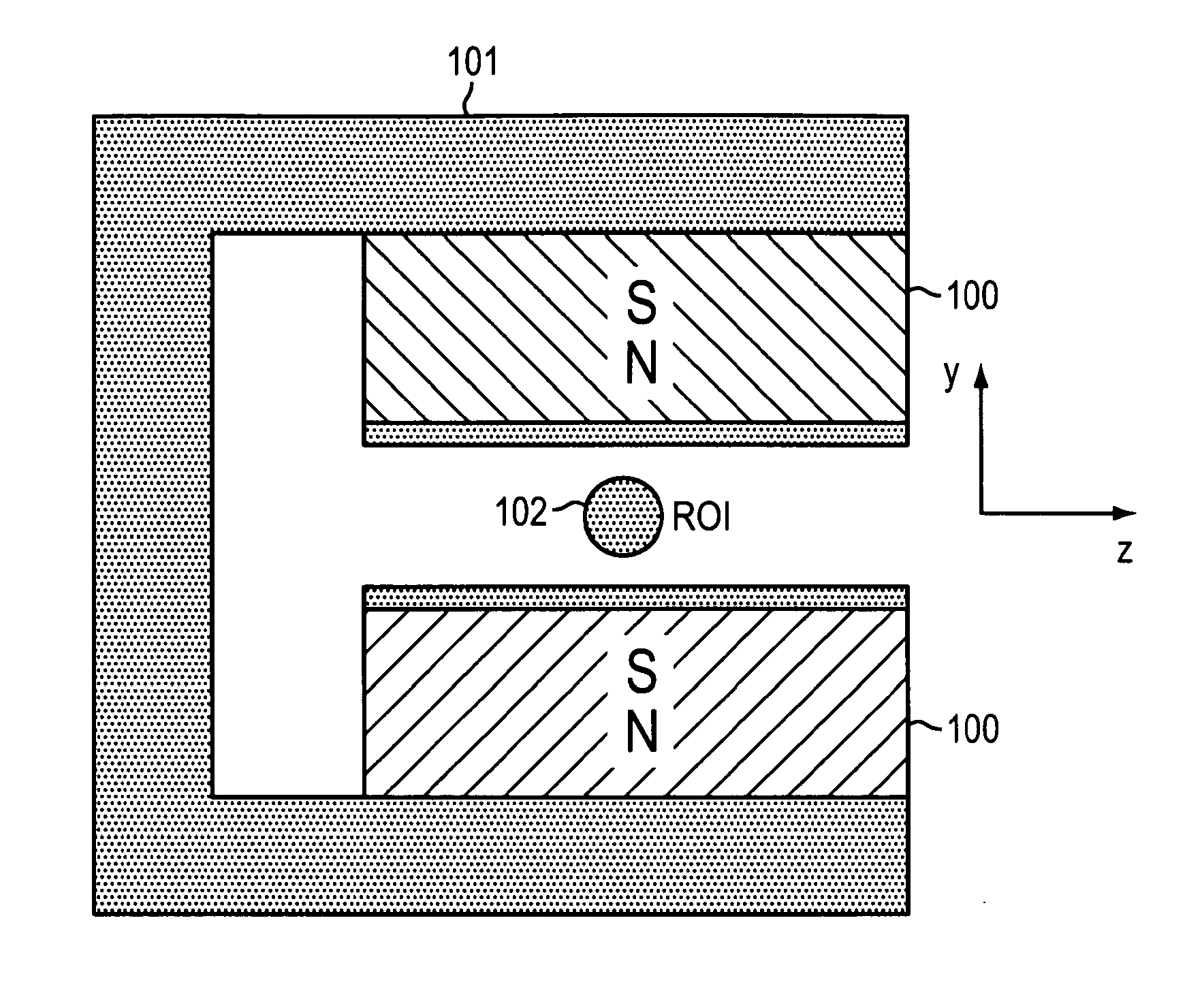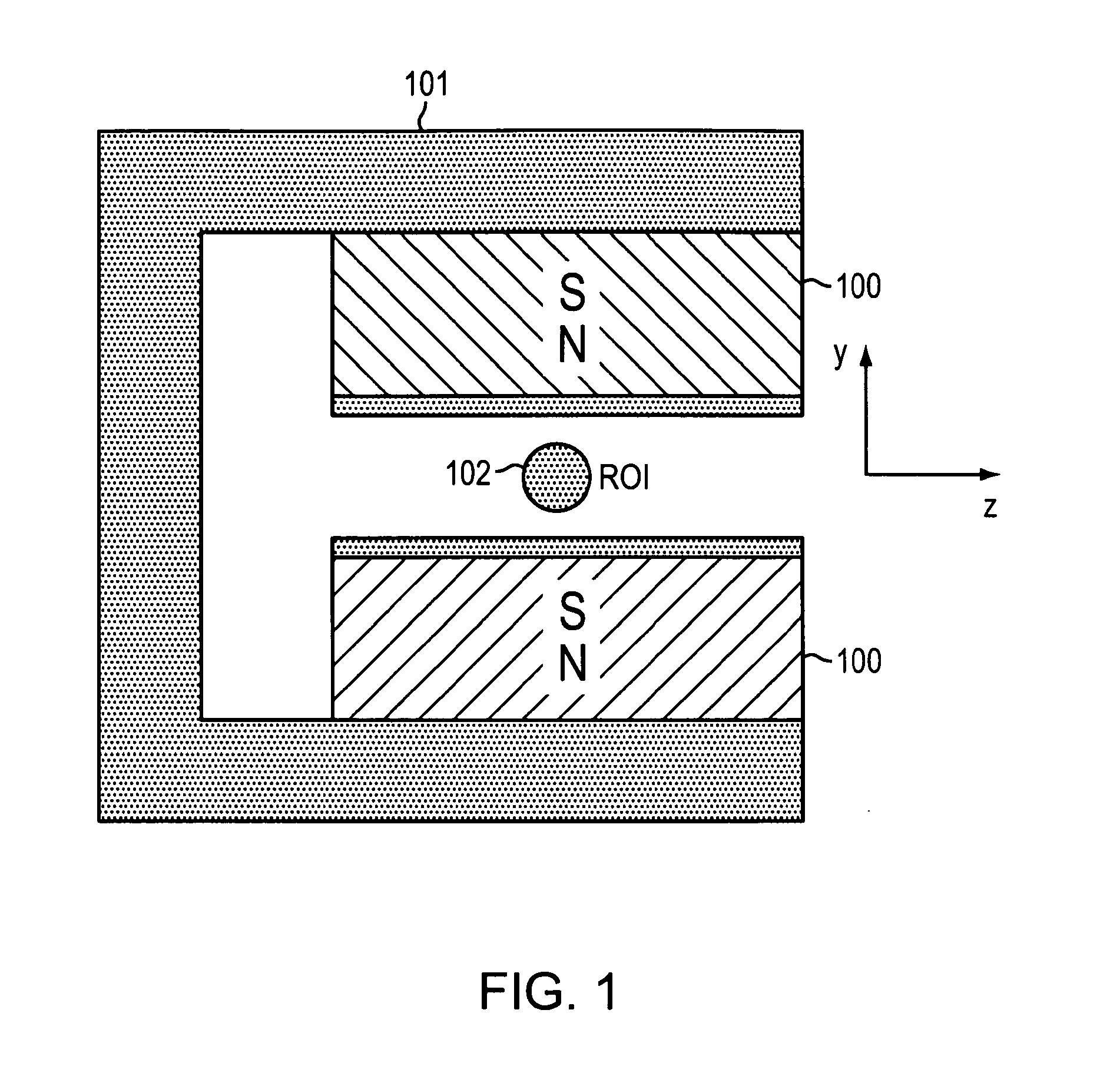Small Magnet and RF Coil for Magnetic Resonance Relaxometry
a small magnet and relaxometry technology, applied in the field of small magnets and rf coils for magnetic resonance relaxometry, can solve the problems of large and/or expensive magnets known to meet these requirements, not suitable for portable devices and/or implantation devices, and/or not suitable as part of disposable probeheads
- Summary
- Abstract
- Description
- Claims
- Application Information
AI Technical Summary
Benefits of technology
Problems solved by technology
Method used
Image
Examples
example 1
[0090]The probehead of FIG. 2 (also referred herein as “Abe” probehead) was fabricated from a custom machined c-shaped yoke 208 (0.688″×0.5″×0.438″, steel), custom machined electronics enclosure 201 (1″×0.5″×0.5″, aluminum), coil holders 202 (0.19″×0.19″, teflon), magnet positioner (0.438″×0.5″×0.063″, Teflon), sample tube 203 (1 mm O.D., 0.5 mm I.D., 0.6″ long, Teflon), and ten-turn RF coil 204 (32 gage enamel coated copper wire, hand-wound, fastened to the sample tube by lock-tite instant adhesive). The resonant circuit was constructed by a 10-120 pF variable matching capacitor 206, and a combination of a 10-120 pF variable capacitor 206 and two fixed capacitors 205, and a bulkhead SMA connector 207.
[0091]Two inexpensive, off-the-shelf permanent magnets made of NdFeB 200 were attached to the steel yoke 208 as shown schematically in FIGS. 1 and 5. (FIGS. 1 and 5 show two magnets 100 attached to a c-shaped yoke 101 and a radiofrequency coil 102 positioned between the magnets). The s...
example 2
[0095]Magnet configuration and yoke design can be accomplished initially by a theoretical prediction of what magnet and yoke configuration will lead to in terms of magnetic field strength. This was done by using standard analytical methods. A magnet assembly including two NdFeB permanent magnets (1″×1″×0.5″) 301 was fabricated according to this method (see “T2-yoke” in FIG. 3). The yoke 300 was fabricated from steel stock using standard machining methods. The magnetic field in the x, y, and z directions was determined by fixing a gaussmeter probe relative to the magnet and moving the magnet in incremental steps with a three axis stage while recording the field strength as a function of position. The strength along the x, y, and z axes was measured by fixing two of the three directions to zero while incrementing the other. The same process was conducted for a pre-fabricated Halbach magnet (FIG. 4; the figure shows the Halbach magnet 400 while the magnetic field is being measured with...
PUM
 Login to view more
Login to view more Abstract
Description
Claims
Application Information
 Login to view more
Login to view more - R&D Engineer
- R&D Manager
- IP Professional
- Industry Leading Data Capabilities
- Powerful AI technology
- Patent DNA Extraction
Browse by: Latest US Patents, China's latest patents, Technical Efficacy Thesaurus, Application Domain, Technology Topic.
© 2024 PatSnap. All rights reserved.Legal|Privacy policy|Modern Slavery Act Transparency Statement|Sitemap



